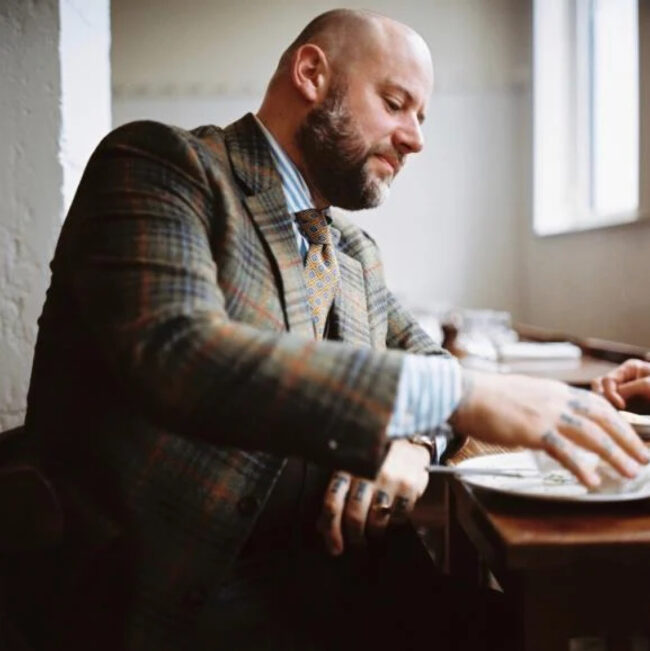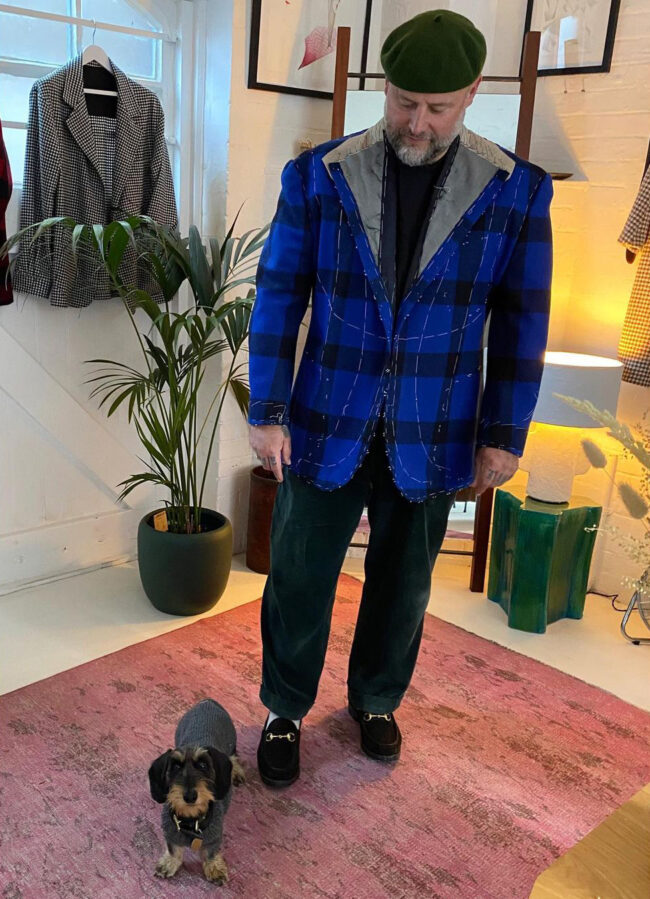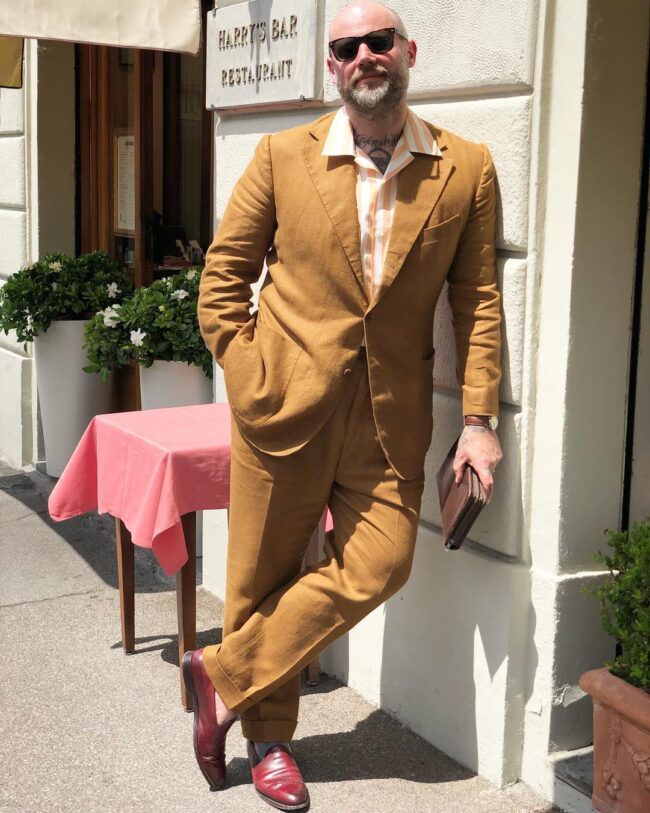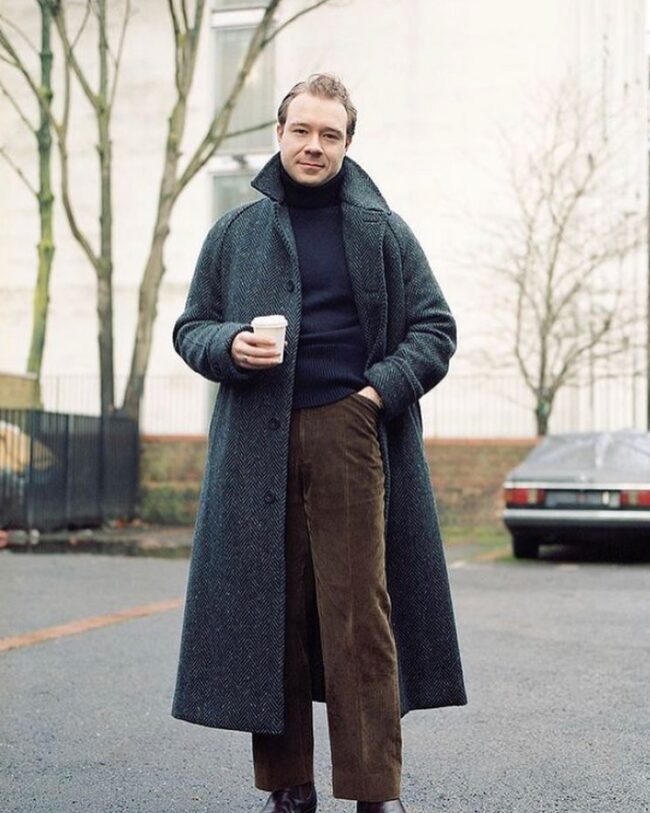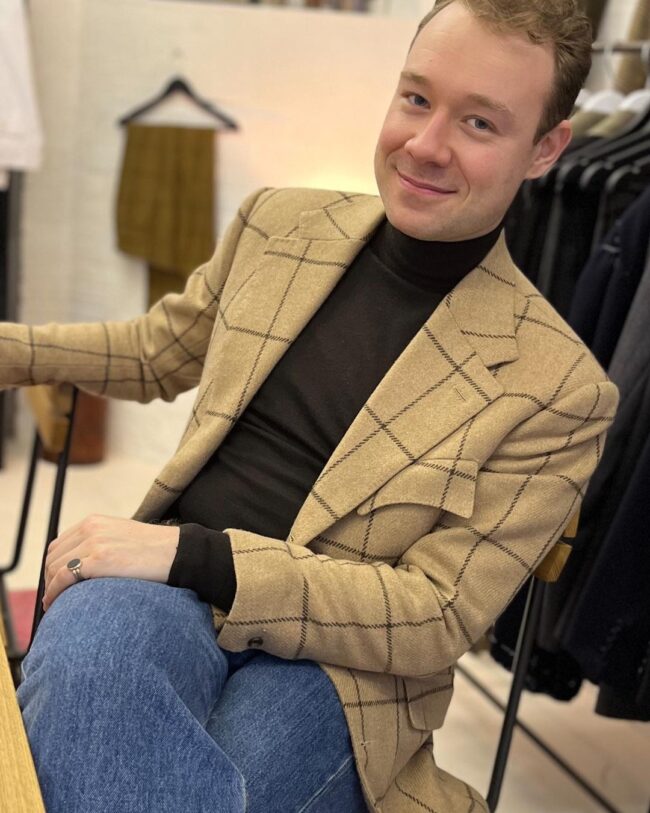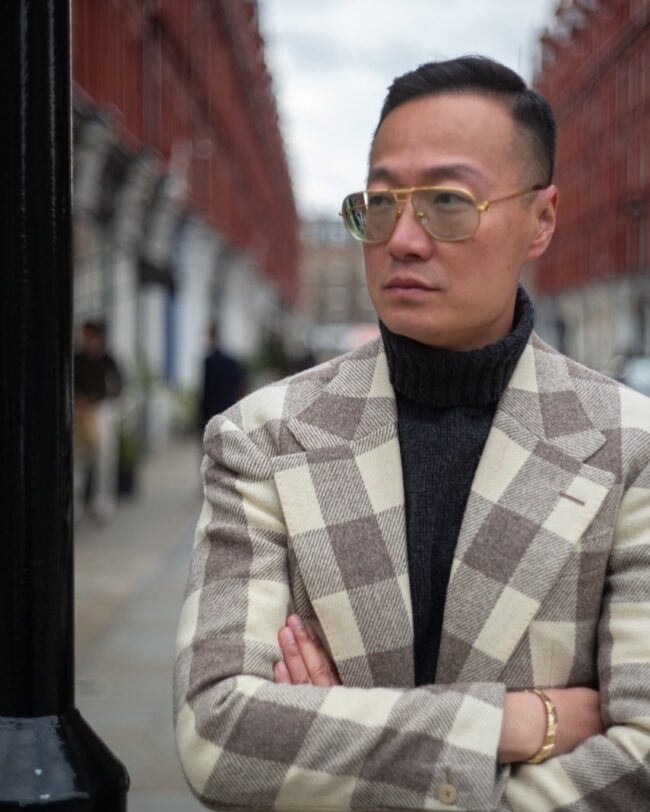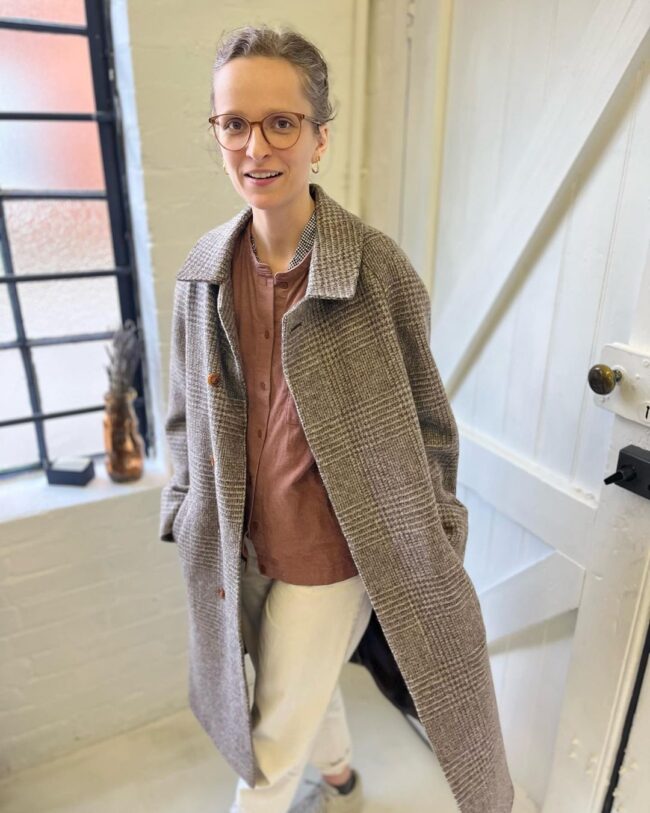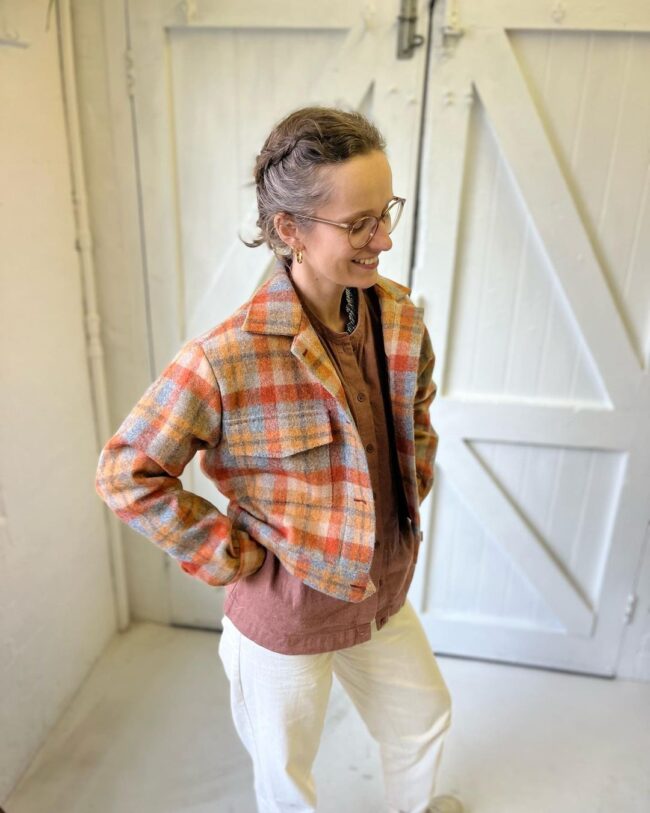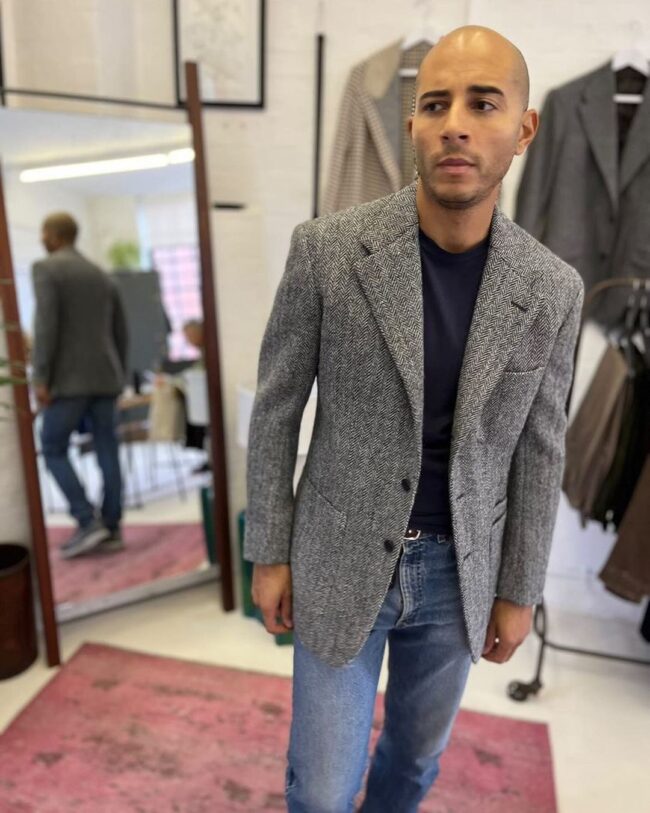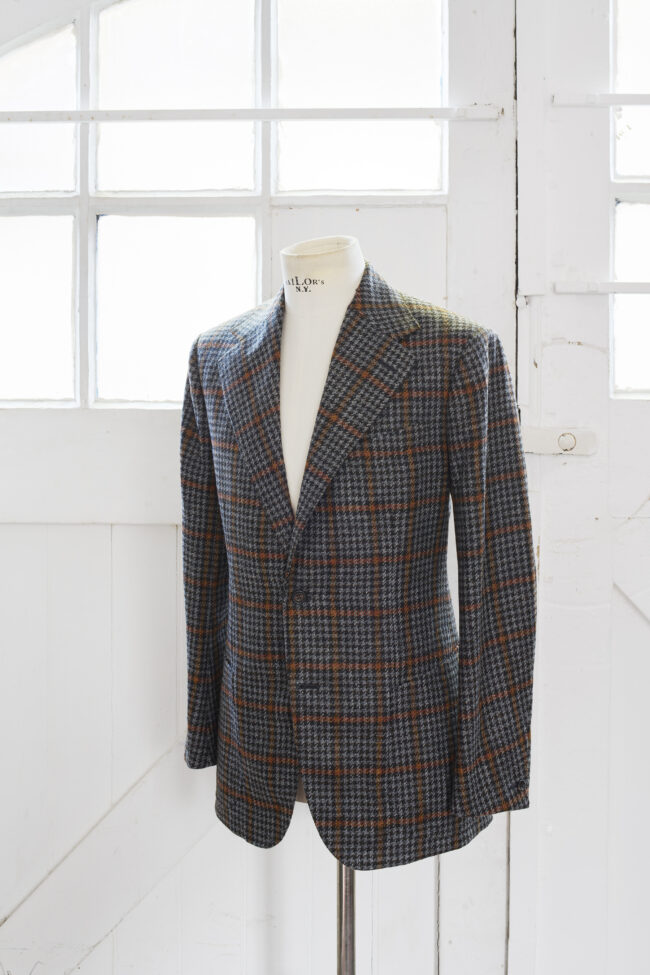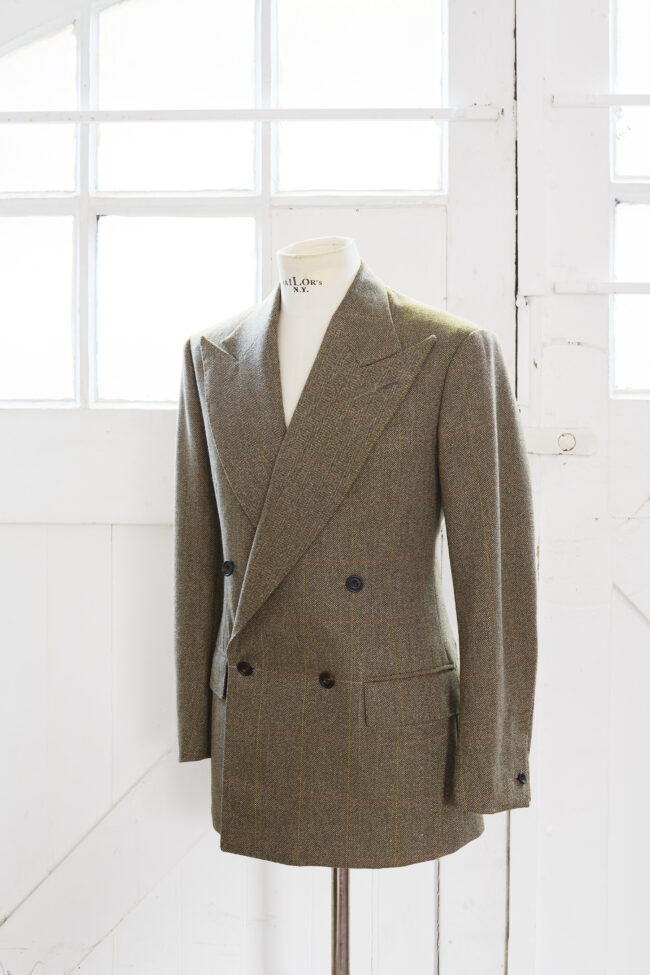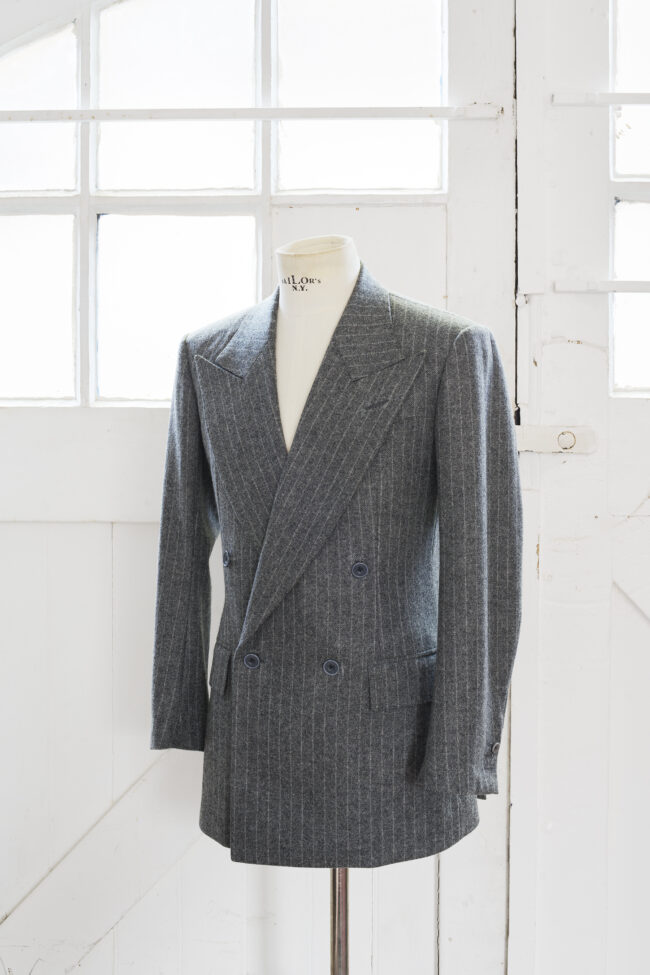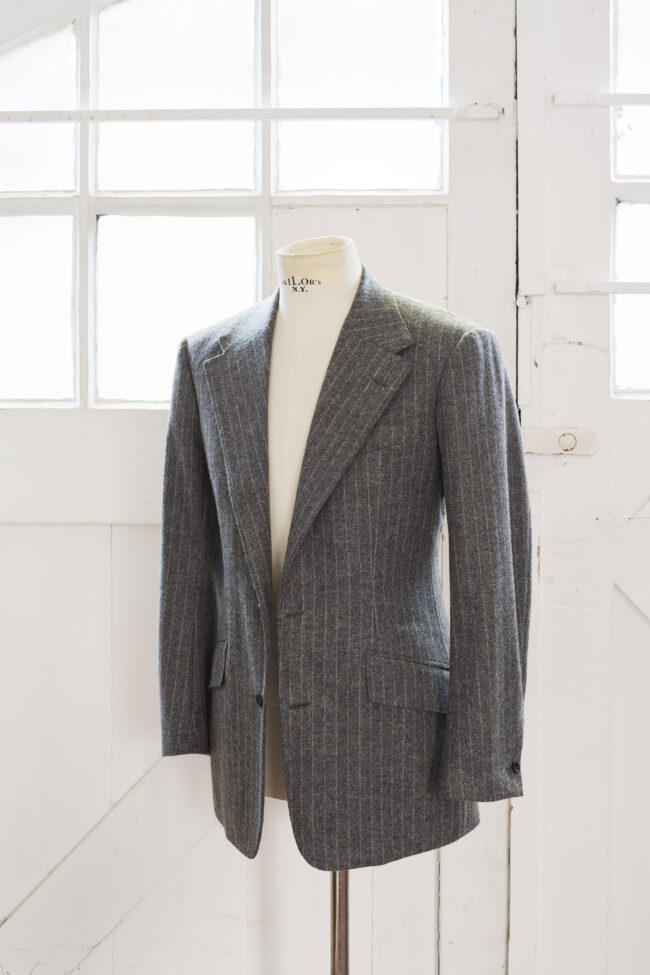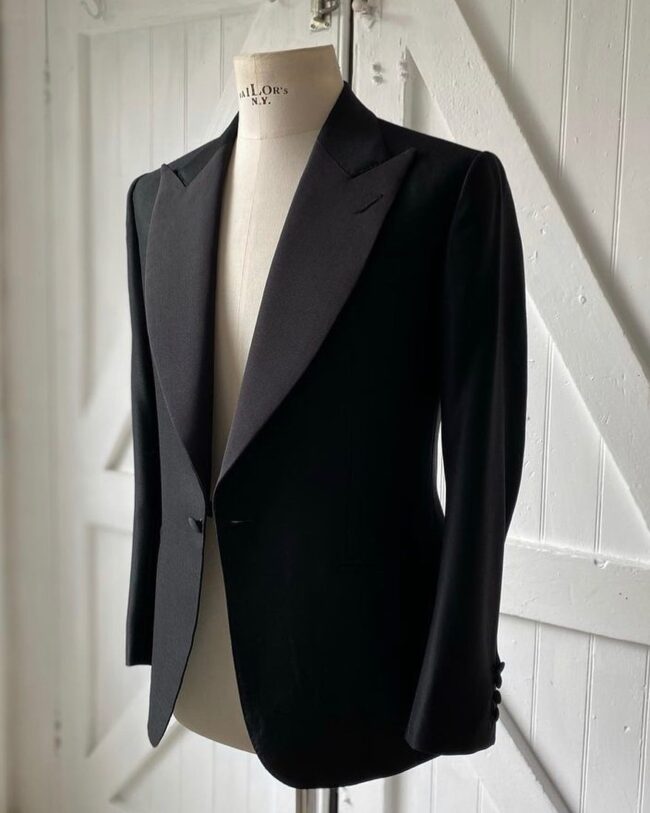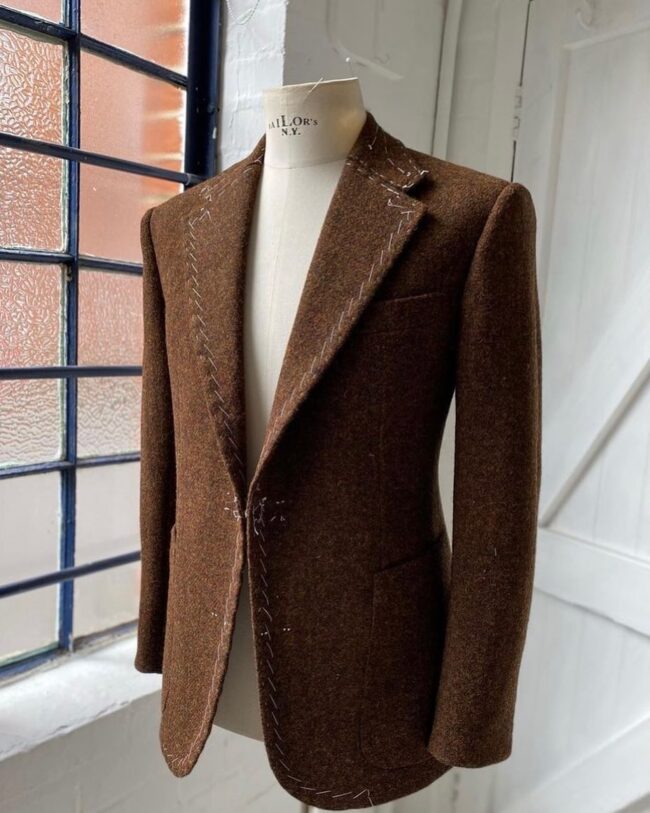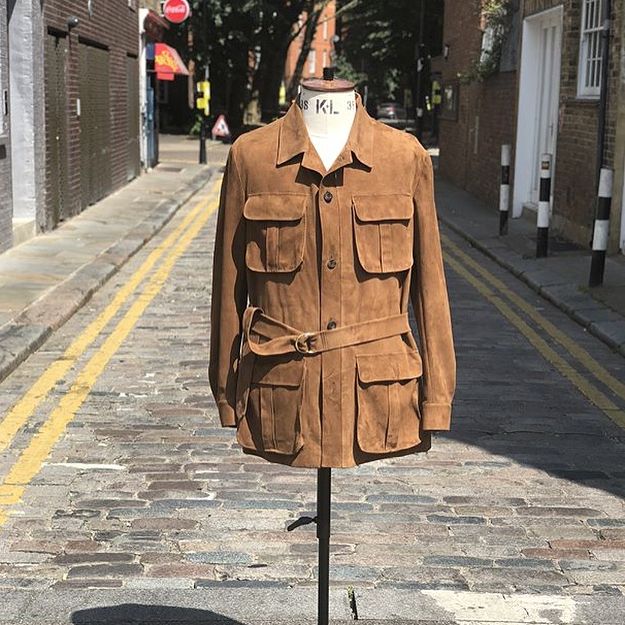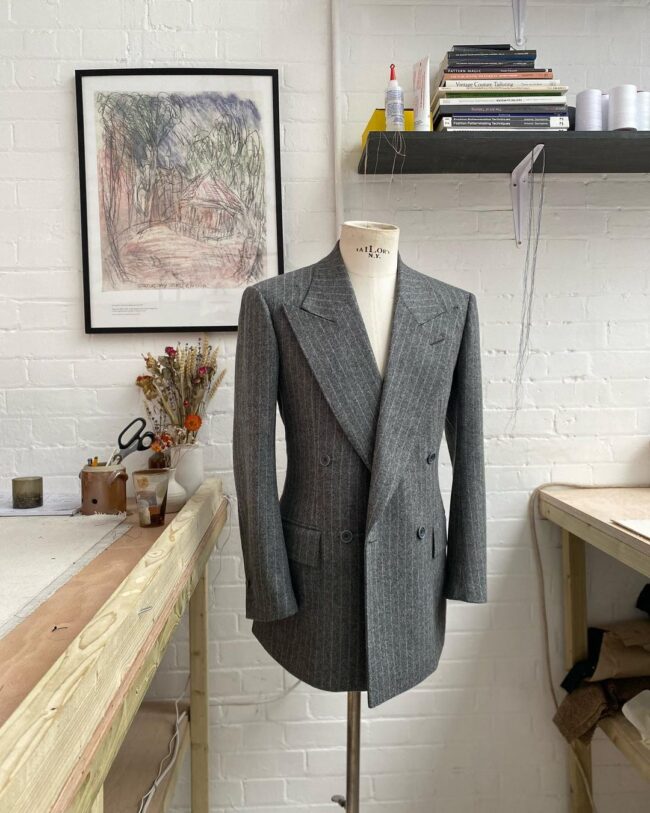
Over the summer, I emailed Fred Nieddu, the skilled cutter behind the independent bespoke tailoring house taillour, to see if he would be willing to extend his US trunk show schedule to include California. After a bit of emailing back and forth, I’m delighted to report that he agreed. Next month, he and his business partner will be visiting San Francisco and New York City to meet with clients and take orders (subsequent trips will happen once every three or four months, as usual for traveling tailors).
I became interested in Fred’s work at the end of 2020, when I wrote a piece for the Vulture about how the Netflix series The Crown used Barbour jackets to represent each character’s relationship with power. Although the article was about waxed cotton field coats, it was the tailoring in the show that truly captivated me. Josh O’Connor’s Prince Charles wears the three-button, narrow-lapel suits that the real-life Prince favored as a youth before switching to drapey double-breasted numbers later in life. I remember thinking that the silhouettes were more faithful to the Golden Age of tailoring than the bespoke sport coat I commissioned from Anderson & Sheppard in 2016.
I later learned that Fred made all of the menswear in the series. He’s also made bespoke clothes for Ralph Fiennes in Bond and all of the lead actors in Murder on the Orient Express (along with countless other films and TV shows). This, combined with the fact that he teaches pattern drafting to third-year tailoring students at the London College of Fashion, makes him a rather unique tailor. Most tailors are known for a specific house style they’ve perfected over time, such as Anderson & Sheppard’s soft drape cut, Huntsman’s padded look, or Edward Sexton’s strong, angular lines. While Fred has a signature style, he’s much more adaptable, as evidenced by how his clothes fit like puzzle pieces into the worlds depicted in these shows.
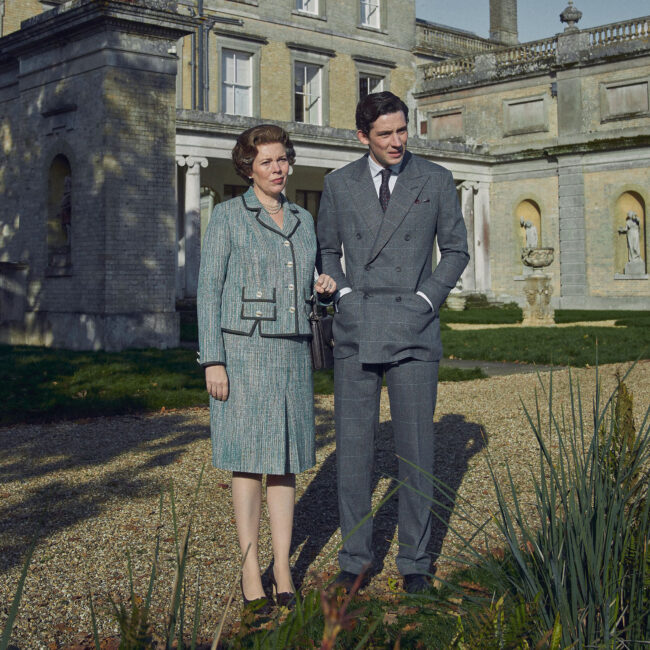

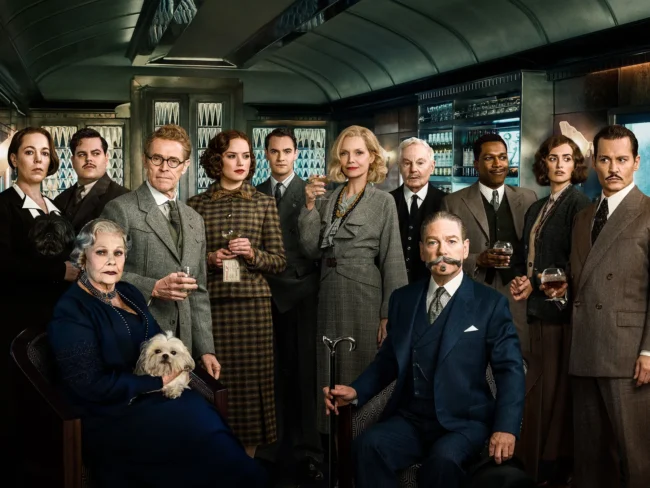
Fred has an unusual way of making clothes. Tailors in England typically use three layers of material inside their jackets to create a silhouette. There’s the body canvas, which runs from shoulder to hem. Then there’s the laptair, a wrapped horsehair cloth, that covers the pectoral muscles and gives the chest some shape (sometimes called the chest piece). Finally, a fuzzy layer of material known as domette is used to prevent the wiry horsehair cloth from poking through and pricking the wearer.
In certain parts of Italy, tailors will use just one layer of body canvas. There’s no laptair or domette; some don’t even use shoulder padding. The result is a very soft and lightweight jacket, comparable to wearing something like a chore coat, but since there’s such little structure inside, the tailor is limited in how they can shape the silhouette. If you extend the shoulder line too far on a soft jacket, the ends will collapse (a problem that worsens with wear and time).
Fred’s technique is a hybrid of these two traditions. He uses a quarter-inch shoulder pad, which is pressed down during the finishing stage to make them a little thinner. This pad is a little thicker than what you’d find in Naples, but it’s also a little thinner than what you’d get from Huntsman. Instead of using laptair around the entire chest, he uses it to fill the hollow space around the collar bone. The chest is then two layers of body canvas; below the buttoning point is one layer of body canvas. By removing most of the laptair, he can also strip away the domette.

Fred explains to me that he finds the triple layering of laptair, domette, and body canvas makes a garment look very “chesty.” By replacing the laptair and domette with two layers of body canvas, he can create a softer, more comfortable garment. The shaping is then achieved through how he cuts the pattern. “All the waisting and chest shape is in the cut, and the body canvas is used to hold the garment in place,” he explains. “If I’m completely honest, I stole this idea from Rubinacci. A customer gave me one of their suits, and it felt so nice, I had to open it up and take a look.”
The result is something like an English jacket with the comfort of southern Italian tailoring. Tony Sylvester has been using Fred’s services for ten years, going back to when Fred worked as an undercutter at Meyer & Mortimer, and says that he thinks of Fred’s coats as being Huntsman-like but without the rigid structure. “The stuff Fred made at Meyer & Mortimer was like nothing else—a long skirt with a broad lapel, very much in the classic West End cut but with a lot more character and elegance. It’s a testament to his work that Meyer & Mortimer still uses photos of those garments on its website 15 years later.”
Kenji Cheung, the co-founder of Bryceland’s in Tokyo, also uses Fred. He says that his taillour garments have required a little more break-in time than his soft Italian coats, but they never fail to stay seated on the neck. “I love the elegance of how a longer coat looks on me. In general, Fred’s work feels more secure, robust, and almost military-esque compared to my Italian coats, which can be beautifully soft but sometimes flimsy.”
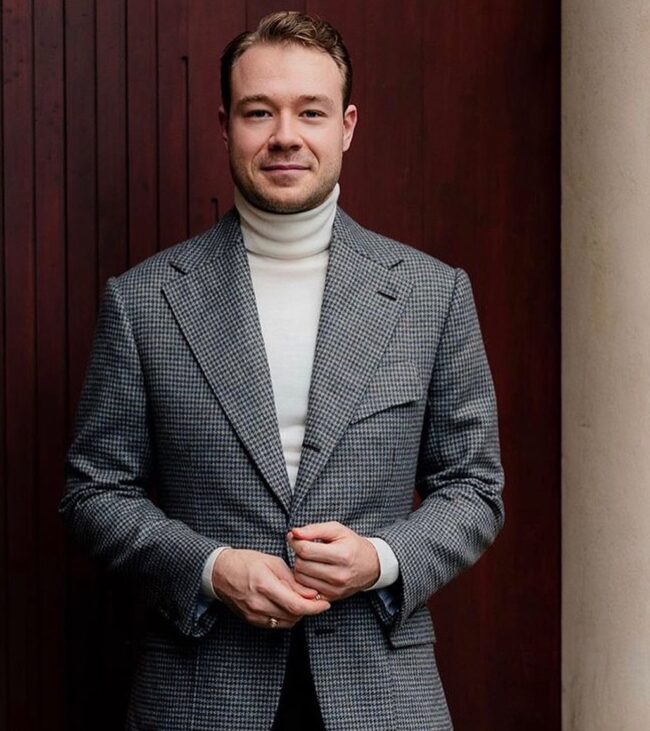
To the degree that taillour has a house style, it can be seen in the photo of Aleks Cvetkovic above. The shoulder line is straight and slightly extended, ending with what Fred describes as not a fully roped shoulder but a “soft English bump.” The chest is slightly fuller, and the jacket comes out with a slight kick to the skirt. One of the interesting things about Fred’s work is that he typically includes a side body. Most tailors cut their coats with four main panels, which are connected to each other with two seams—one on each side. By creating two separate side bodies, Fred can shape the waist without putting too much stress on the side seams. “It’s like displacing the stress across four seams rather than two.”
Tony adds: “Fred’s house style is a mix of that military-inspired London cut that he learned as an apprentice with his natural preference for soft, comfortable tailoring. He makes coats with a very light canvas and shoulder pad, coupled with a high armhole and a broad lapel. He always cuts a sort of ‘Florentine/ London’ style jacket for me with no front dart, a natural shoulder line, and some big lapels.”
The old adage about bespoke tailoring still applies: you should stay close to a tailor’s strengths and not push them too far outside their house style. Fred has noted elsewhere that if a client wants a Neapolitan spalla camicia or chesty drape-cut suit, he would not be the right tailor for them. However, he works with three coatmakers, each specializing in a certain way of making things (drape fans will be interested to know that one was trained at Anderson & Sheppard). He also has two in-house trouser makers who are open to experimenting. This team, coupled with Fred’s experience working on films, makes him a much more adaptable tailor. For The Crown, he followed some of Frederick Scholte’s drape-cut techniques. On Instagram, some suits feature a much cleaner silhouette. He has also made some wonderful overcoats, womenswear, and even a belted suede jacket for Simon of Permanent Style.
I’m intrigued by Fred’s ability to create strong, angular lines and an expressive silhouette without the stiff formality of traditional British tailoring. Much of his film work also evokes a bygone era of classic men’s tailoring that’s hard to come by nowadays, even through bespoke. I plan to see him next month in San Francisco and am debating between commissioning a tweed sport coat made from London Lounge cloth or an olive double-breasted gabardine suit. I have three weeks to make a decision.
Information for the Coming Trunk Shows
NYC: Monday, November 14th until Thursday, November 17th
San Francisco: Friday, November 18th until Sunday, November 20th (last available appointment is 12 noon on Sunday).
Price List: 2pc suit £3500; 3pc suit £4200; sport coat £2400; trousers £1200; overcoat £2800; 2pc dinner suit £4200
For appointments, please email fred@taillour.co.uk
